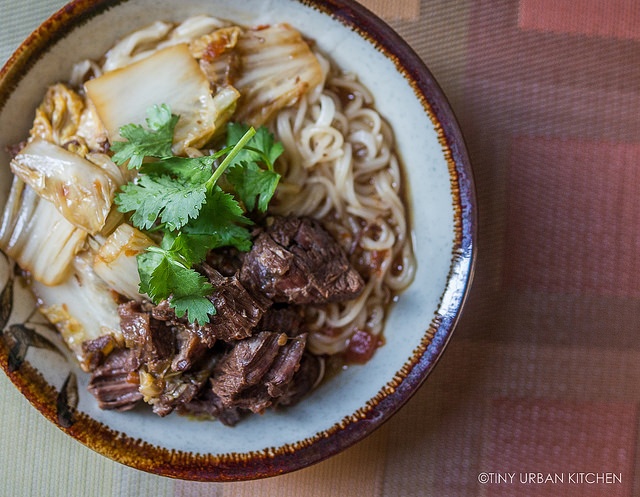
The last six months have been life-changing for me in terms access to Asian groceries.
It all started with my company's move to Fan Pier in Boston.
Up until January, my entire adult working life has been in the city of Cambridge. I lived in Cambridge; I worked in Cambridge. Heck before that, I went to school in Cambridge.
For those of you who know Cambridge, you'll know how frustrating it is to get Asian groceries. As far as I know, we don't have a Chinese grocery store (though there is a wholesale tofu maker, but we'll leave that for another post). We had a few decent Japanese grocery stores in the past (Kotobukiya, Miso Mart), but they've all left now. There's a small Korean market (Lotte) near MIT, and then there's Reliable, another Korean market in Somerville not that close to where I live.
So I would go into Chinatown or Hong Kong Market in Allston on occasional weekends. Sometimes I would resort to the paltry Asian offerings at my neighborhood supermarkets.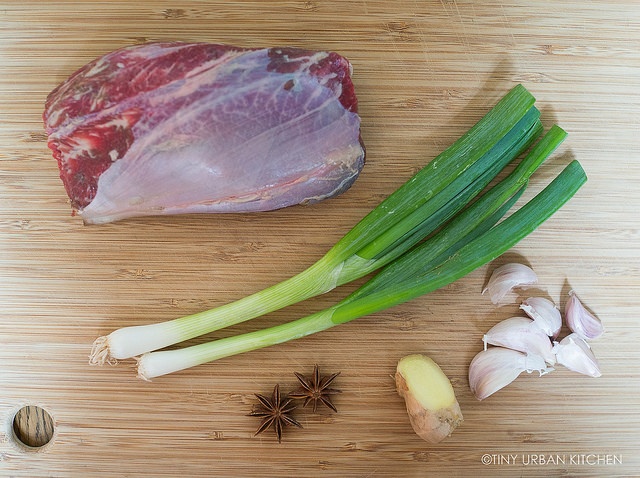
My life changed when my company moved to Fan Pier. All of a sudden, I virtually passed by Chinatown on my way home everyday. Better yet, there was a C-Mart right at South Station. It was all-too-convenient to pick up hard-to-get items like Chinese BBQ "Sacha" sauce, my favorite "Old Lady" chili sauce, Chinese vegetables galore, and unusual cuts of meat.
My life changed AGAIN when H-Mart opened in Central Square in May. Now I could make a super quick stop at Central Square and pick up my favorite Japanese snacks, many Chinese items, and (naturally) tons of Korean specialties.
I was thrilled to find that both C-Mart and H-Mart carry beef shank cut lengthwise (not through the bone), which is the exact cut used for many favorite Taiwanese dishes, such as my mom's soy braised beef shank and Taiwan's national dish: Beef Noodle Soup.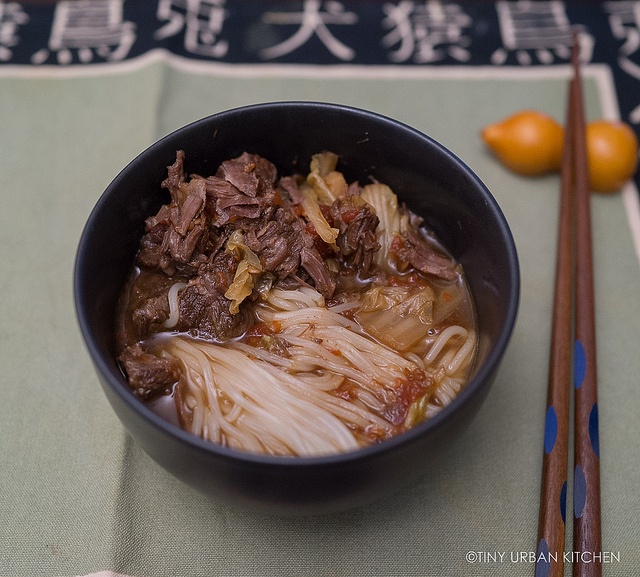
I've been making this dish a lot more, especially this past winter because it was so cold. More recently, I tried using the pressure cooker to make it, which worked out great and saved tons of time.
Now, instead of spending 3-4 hours on a weekend slowly simmering this time-intensive dish, I can "crank out" a delicious beef noodle soup with fall-apart soft meat in just about an hour. Perfect for a weeknight meal.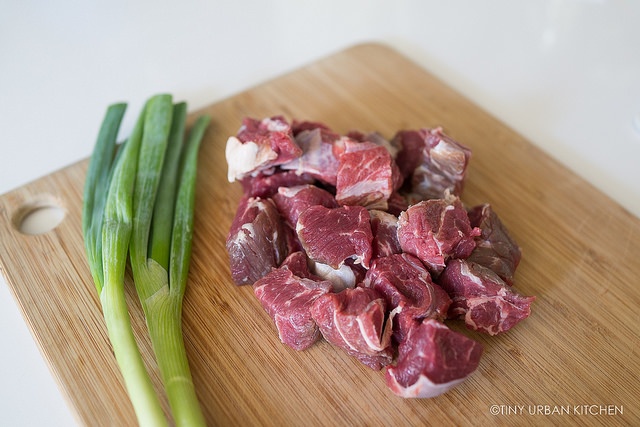
Beef shank is the traditional meat used to make this dish, although I've seen recipes that substitute it with beef stew meat. I've personally never done that before, and my guess is that it won't be nearly as good. What makes shank so delicious in beef noodle soup is the presence of a lot of tendon / connective tissue, which contributes to rich, collagen-filled broth that results. The bone-in version that you get in normal western-style grocery stores works fine too. In fact, that's the version I used in my hand-pulled noodle video tutorial.
Begin by prepping all your ingredients. Chop your ginger and scallions. Mince the garlic. Cut up the shank into 1-2 inch pieces.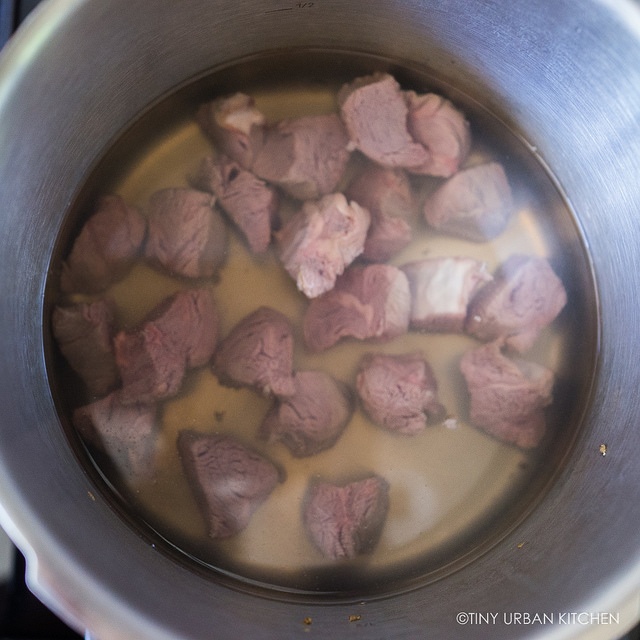
Bring a pot of water to boil and briefly boil the beef chunks for about 5 minutes. The main purpose for doing this is to "clean" the meat of its blood bits, etc. It will result in a clearer, cleaner-looking, and prettier broth, though if you're in a bind and you don't care about the look, it's a step that can be skipped.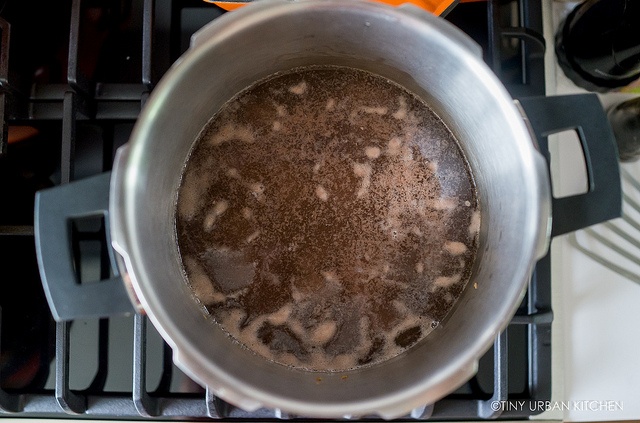
Within a minute or two you'll start to see this ugly pinkish foam float to the top.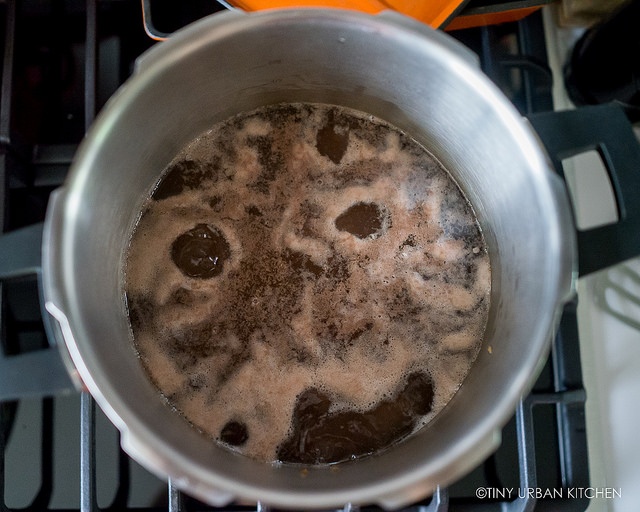
After about 5-7 minutes it'll get pretty thick and stop getting thicker (which means you're pretty much done).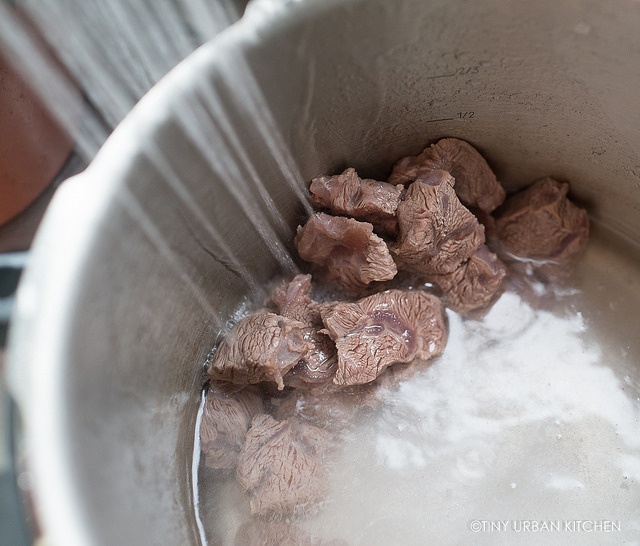
Dump out the dirty water in the sink and rinse the beef pieces. Set them aside.
In a pressure cooker, stir-fry ginger, garlic, scallions, and star anise with vegetable oil over medium heat until fragrant.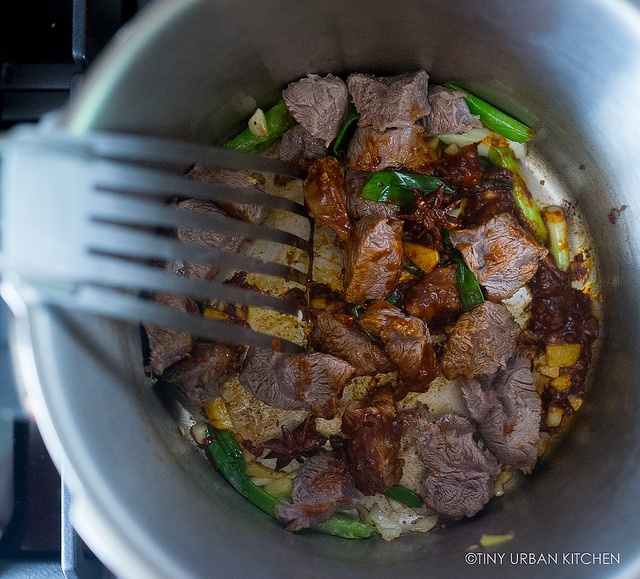
Add beef shank pieces and chili bean sauce (or "broad bean paste with chili) "豆瓣酱" and saute for a few minutes until the beef is slightly browned.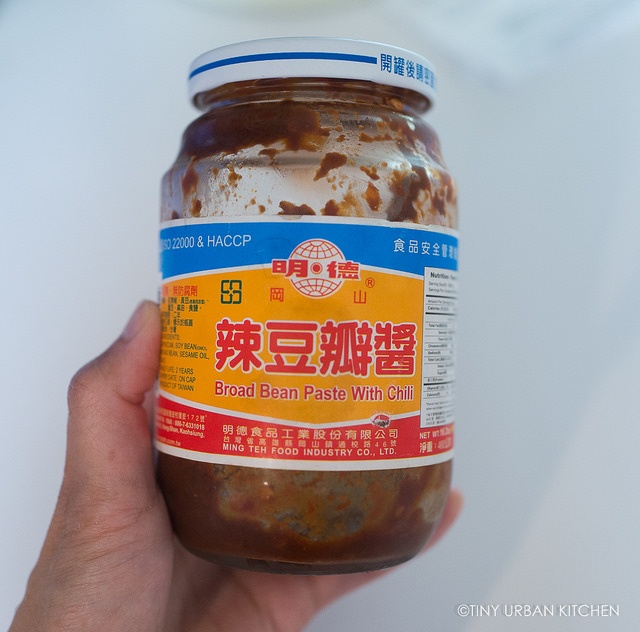
This is the brand of chili bean sauce I like to use. I actually buy the spicy version, and they call it "broad bean paste with chili" in English. Most importantly you want to see the Chinese characters豆瓣酱, or "dobanjiang." I like the above brand because it's from Taiwan.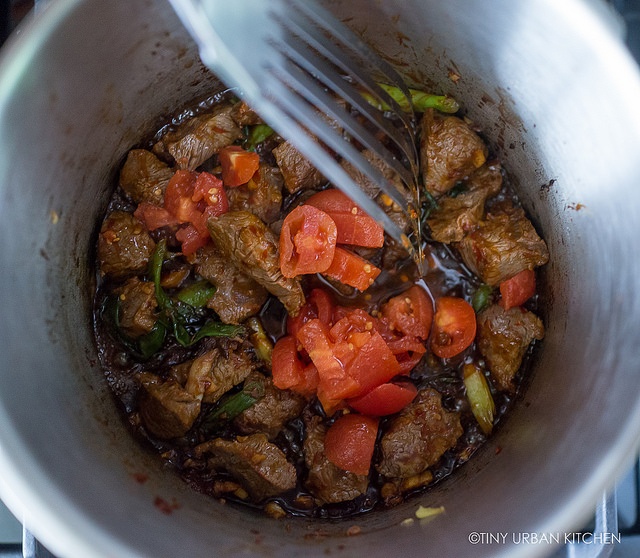
Add tomatoes, rice wine, and rock sugar (can substitute with brown sugar if necessary).
If you don't have fresh tomatoes, you can totally used canned whole tomatoes. In the above photo, I cut up several canned whole San Marzano tomatoes (they are tiny so I used 2-3), which worked out great.
The amount of rock sugar is really personal taste. Bryan hates sweet foods (e.g., he's not a fan of most Americanized Thai food), and thus I only add a tiny bit (we're talking like "dime sized rock") of rock sugar. Other people will add up to ¼ cup, which will make the soup definitely a bit sweet. You can always adjust the flavor at the end.
Finally, add just enough water so that everything is covered.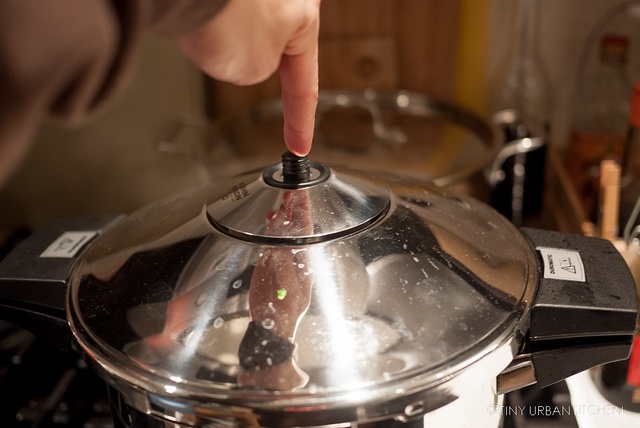
Cook under high pressure for about 30 minutes. Then slowly release the pressure. Because I was not in a hurry, I just turned off the heat and let it naturally release pressure. You can also release pressure more quickly using the method recommended by the manufacturer. In the case of my Kuhn Rikon I just press down on the little lever on top and it released steam until the pressure is back down.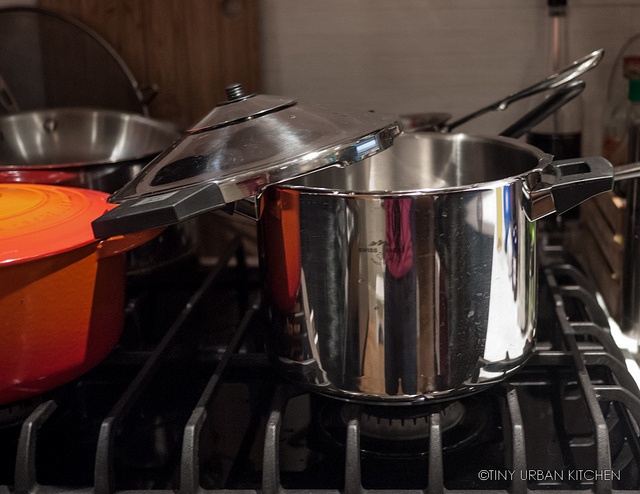
Once the lid is off, you can use this opportunity to quickly cook some vegetables. I usually just cook some baby bok choy, though recently I saw a version made my blogger friend Joy Huang from The Cooking of Joy where she used napa cabbage. That was delicious as well.
The choice is totally yours. Every region, every family, and everyone's mom makes beef noodle soup just a bit differently, so go ahead and start your own tradition.
If you're really ambitious, you could even try hand-pulling your own noodles. Here's a fun video I made back in 2010 showing how to make both the hand-pulled noodles and this beef noodle soup! Warning - hand pulling noodles is really tricky and noodle dough is super finicky. Consider yourself warned!
These days it's much too easy just to pick up a package of fresh homemade noodles from either C-Mart or H-Mart. Ah, I am so spoiled now.
Enjoy!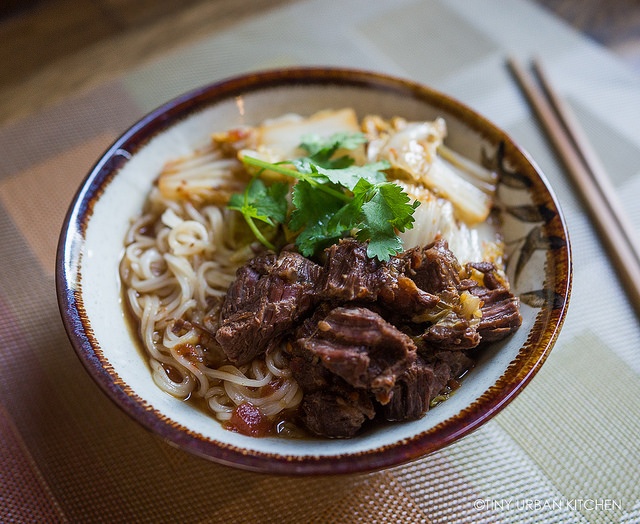
Taiwanese Beef Noodle Soup
Serves 4
2 lbs beef shank (cut up into chunks)
1 T vegetable oil
5 cloves of garlic, minced
1 inch chunk of ginger, chopped
2 star anise
2 scallion stalks, chopped
2 T chili bean sauce (or broad bean paste with chili / 辣豆瓣酱)
½ cup soy sauce
1 tomato, sliced
¼ cup rice wine
1 teaspoon to ¼ cup rock sugar (optional)
chili sauce (optional)
5 cups water (or enough to cover the beef)
Optional vegetables
blanched bok choy
napa cabbage
fresh cilantro as garnish
Preboiling
Bring a pot of water to boil and briefly boil the beef chunks for about 5 minutes, or until a white foam forms at the top of the water. Drain dirty water, rinse beef shanks, and set aside.
Stir-frying
1. In the pressure cooker over medium high heat, saute garlic, ginger, scallions, and star anise in vegetable oil until fragrant.
2. Add beef shank pieces and chili bean sauce and saute for a few minutes, until the beef is slightly browned.
3. Add soy sauce and cook for 2 minutes.
4. Add tomatoes, rice wine, and rock sugar.
5. Add water until everything is just covered.
6. Bring up to high pressure and cook under pressure for 30 minutes. Slowly release pressure and serve.
ALTERNATE: If you don't have a pressure cooker
Bring pot to medium high heat until boiling and then reduce to a simmer for 2-4 hours, or until the beef is fall-apart tender.
7. Adjust taste to preference (e.g., add chili sauce to make it spicier; add more soy sauce, salt, or rock sugar)
8. Serve with blanched bok choy and noodles
9. Optionally garnish with cilantro (Bryan's favorite!)
Yum!
And they are just as good if not better as leftovers the next day!












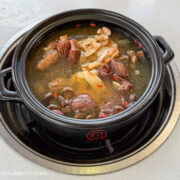

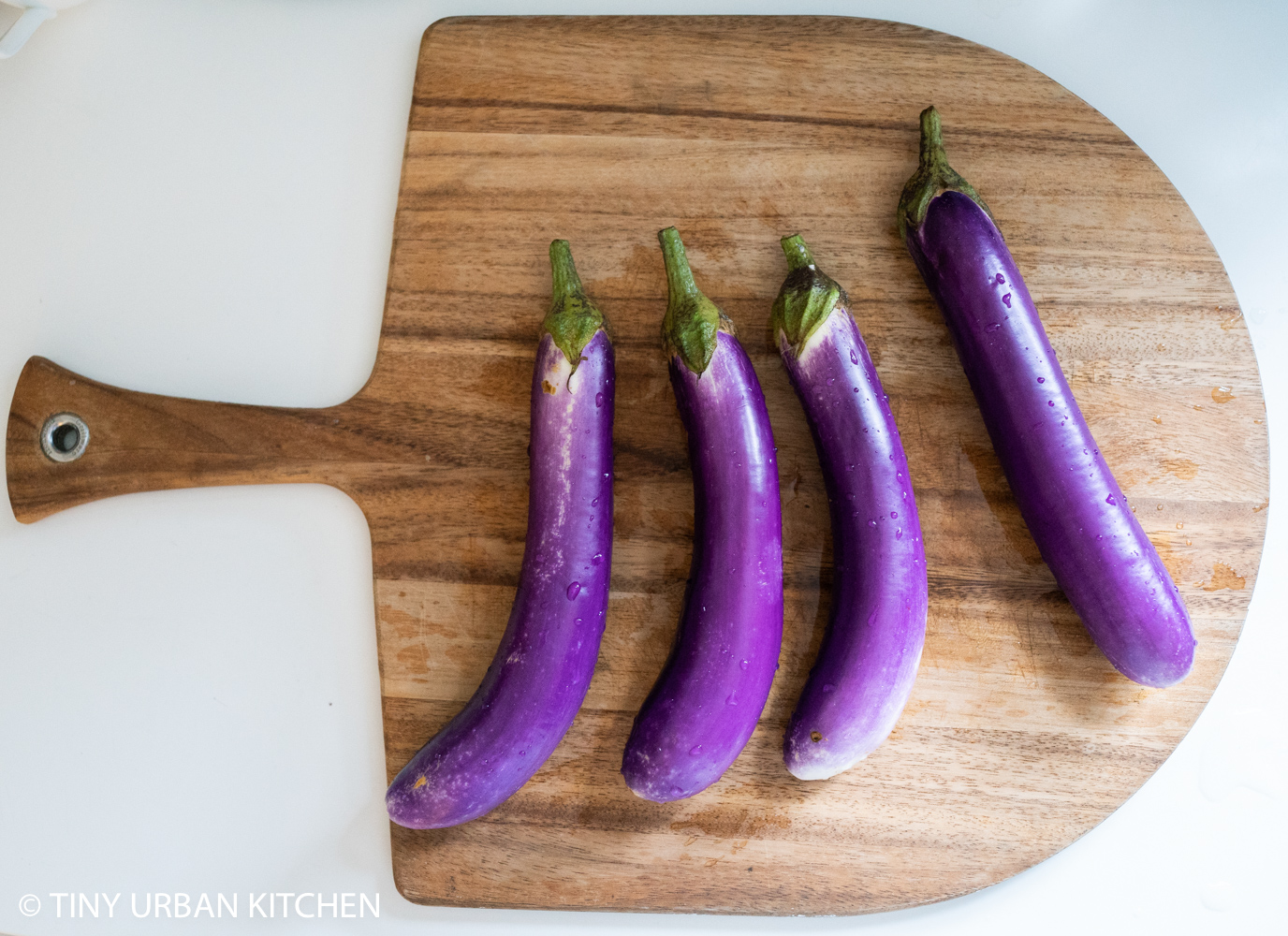
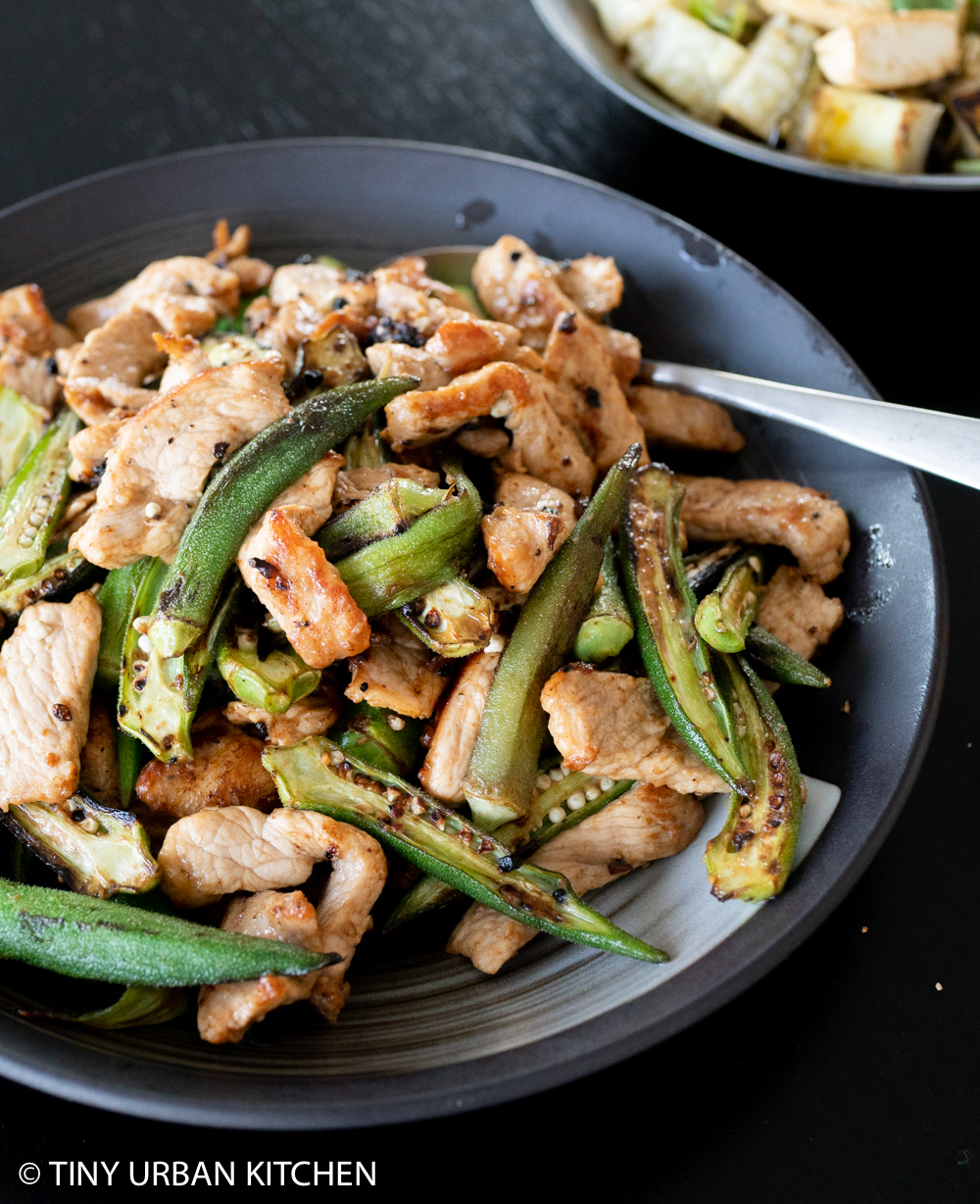
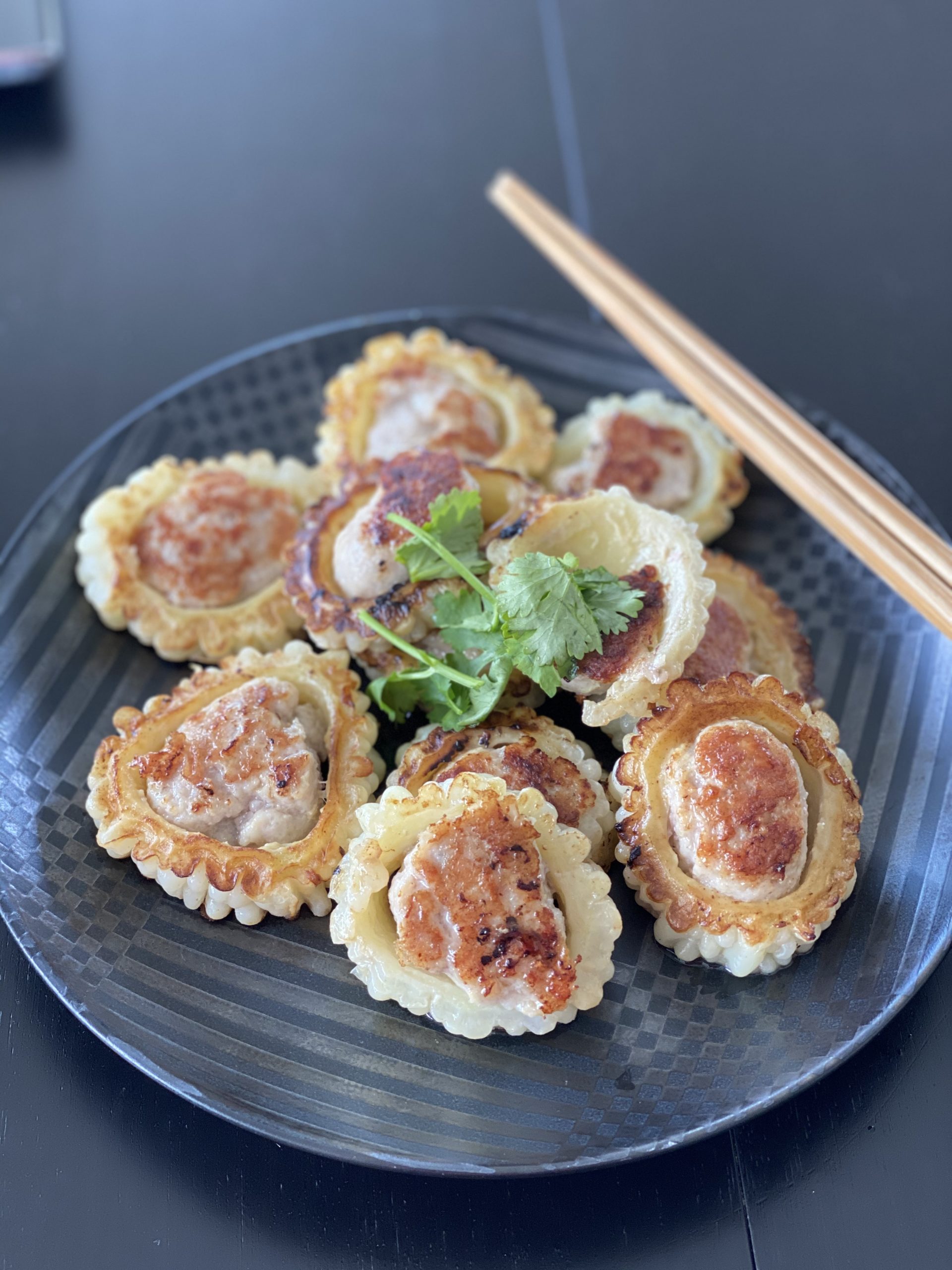
[…] menu I make often includes a subset of the following dishes: Taiwanese Meat Sauce over rice, Beef Noodle Soup, Three Cup Chicken, Tea Eggs, Chinese Chives + 5-spice Tofu, and stir fried Baby Bok Choy. This […]